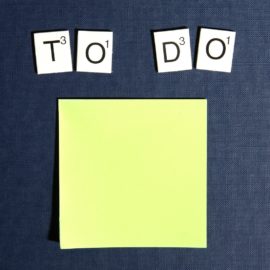

This article is an excerpt from the Shortform book guide to "Scaling People" by Claire Hughes Johnson. Shortform has the world's best summaries and analyses of books you should be reading.
Like this article? Sign up for a free trial here.
Do you know how to build an effective team? Is your current team failing to work cohesively?
Claire Hughes Johnson recognizes that the work isn’t finished after you’ve hired the best candidates to round out your team. On the contrary, you must take active steps to integrate these new employees successfully into the team.
Let’s examine three steps that Hughes Johnson recommends for building and sustaining effective teams.
Step #1: Evaluate Your Team Members
Business expert Hughes Johnson relates that the first step toward learning how to build an effective team involves assessing your team members to see whether they’re capable of meeting their goals. To do so, she advises that you utilize Max Landsberg’s skill-will matrix to assess team members along two dimensions: their competency for completing their tasks (skill) and their drive to do so (will).
(Shortform note: Landsberg first presented his skill-will matrix in The Tao of Coaching, a guidebook for managers and leaders looking to become more effective teachers. In his book, the skill-will matrix is one of a handful of simple techniques that, according to Landsberg, are essential for becoming a master coach. For example, he recommends using the “GROW” model during coaching sessions, in which you set a goal at the onset of the session, refer to concrete examples as the reality, consider the options that your employee might implement, and finally wrap up by committing to a plan for improvement.)
With respect to skill, Hughes Johnson notes that there are two possibilities. First, it’s possible that a team member will have too little skill, in which case she recommends either training the team member or hiring new team members who already have the requisite skills. Second, it’s possible that a team member will have too much skill, such that their tasks will bore them because they’re insufficiently challenging. In this case, she advises that you shift your team’s goals so that they’re more demanding.
(Shortform note: For managers looking to continue increasing their employees’ skill level, Brad Stulberg and Steve Magness’s advice in Peak Performance may help. Stulberg and Magness argue that increasing skill requires partaking in challenges at the edge of one’s comfort zone—that is, activities that are challenging enough to stimulate growth, but not so challenging that growth is impossible. Thus, as a manager, you should find ways to continue encouraging your employees to engage with the edge of their comfort zone, such as by assigning them increasingly more difficult tasks.)
With respect to will, Hughes Johnson says there are two analogous possibilities. First, a team member might have too little will, leading them to work inefficiently. If that’s the case, she suggests that you try to reorient the team member around the team’s mission. For example, if you were managing a marketing team for a healthcare company, you could remind unmotivated team members of your mission to (say) provide affordable healthcare for low-income families. Alternatively, a team member might have too much will, which Hughes Johnson warns can lead them to set unrealistic expectations that they can’t meet. In this case, she recommends explicitly setting expectations so that team members aren’t setting themselves up for failure.
(Shortform note: Although Hughes Johnson writes as if motivation comes before successful work, Jeff Hayden argues otherwise in The Motivation Myth. According to Hayden, we typically think—like Hughes Johnson—that strong initial motivation spurs us toward hard work and therefore success. However, he contends that the opposite is true: Motivation is generated after you’ve implemented a plan for success and begun working toward it. Thus, instead of explicitly trying to motivate low-will team members, you might consider helping them take a first step toward greater success in order to build momentum—and thus motivation.)
Step #2: Decide When to Delegate Tasks
Hughes Johnson contends that, after you’ve assessed your team members’ competencies and motivation, the next step is to start delegating assignments centered around your team’s goals.
For context, she explains that managers who delegate tasks too frequently or too infrequently risk harming the teams they’ve built. On the one hand, when managers delegate tasks all the time, they often overwork their teams and place too much responsibility in employees’ hands too quickly. On the other, managers who never delegate tasks run the risk of taking on too much work and leaving their team members insufficiently challenged.
To strike the perfect balance, Hughes Johnson suggests that you evaluate every task along two dimensions—its consequences and its reversibility—and only handle tasks that you can’t afford to mess up (those with serious, irreversible consequences). For example, if wealthy investors ask for a presentation on your company to decide whether to invest, the presentation itself would have crucial ramifications with no opportunity for a do-over. In such cases, the stakes are high enough that you should perform the task yourself. But, according to Hughes Johnson, you should delegate all other types of tasks to your team, because such tasks are good learning opportunities for them and also because delegating them affords you more time to focus on higher-stakes tasks.
| Practical Advice for Managers When Delegating Tasks Although Hughes Johnson offers a means to decide whether to delegate a given task, she doesn’t offer concrete strategies about how to delegate a task—for example, how to decide who should work on it and how to communicate the nature of the task. To that end, business experts offer a range of practical tips that supplement Hughes Johnson’s advice. For example, you can: Delegate tasks in accordance with your employees’ strengths and weaknesses. For example, don’t ask an introverted team member who struggles at public speaking to give a crucial presentation. Establish a clear means of communication (whether via email, instant message, or face-to-face) so that you can easily check in about your employee’s progress. Accept that your team members will occasionally fail, since failure is an essential part of the learning process. Acknowledge when your team members succeed at their delegated tasks so they feel appreciated. |
Step #3: Develop a Healthy Team Environment
After you’ve started delegating work to your team members to tackle key projects, Hughes Johnson’s final step is to continuously develop a healthy team environment that establishes a safe culture of open expression and trust. According to Hughes Johnson, there are two primary modes of establishing this environment: offsites, which are multiple-day events that take place outside of the office, and regular meetings.

———End of Preview———
Like what you just read? Read the rest of the world's best book summary and analysis of Claire Hughes Johnson's "Scaling People" at Shortform.
Here's what you'll find in our full Scaling People summary:
- How to successfully manage employees in a high-growth environment
- The four components that your company's mission should include
- Why you should have a formal review process for your employees





